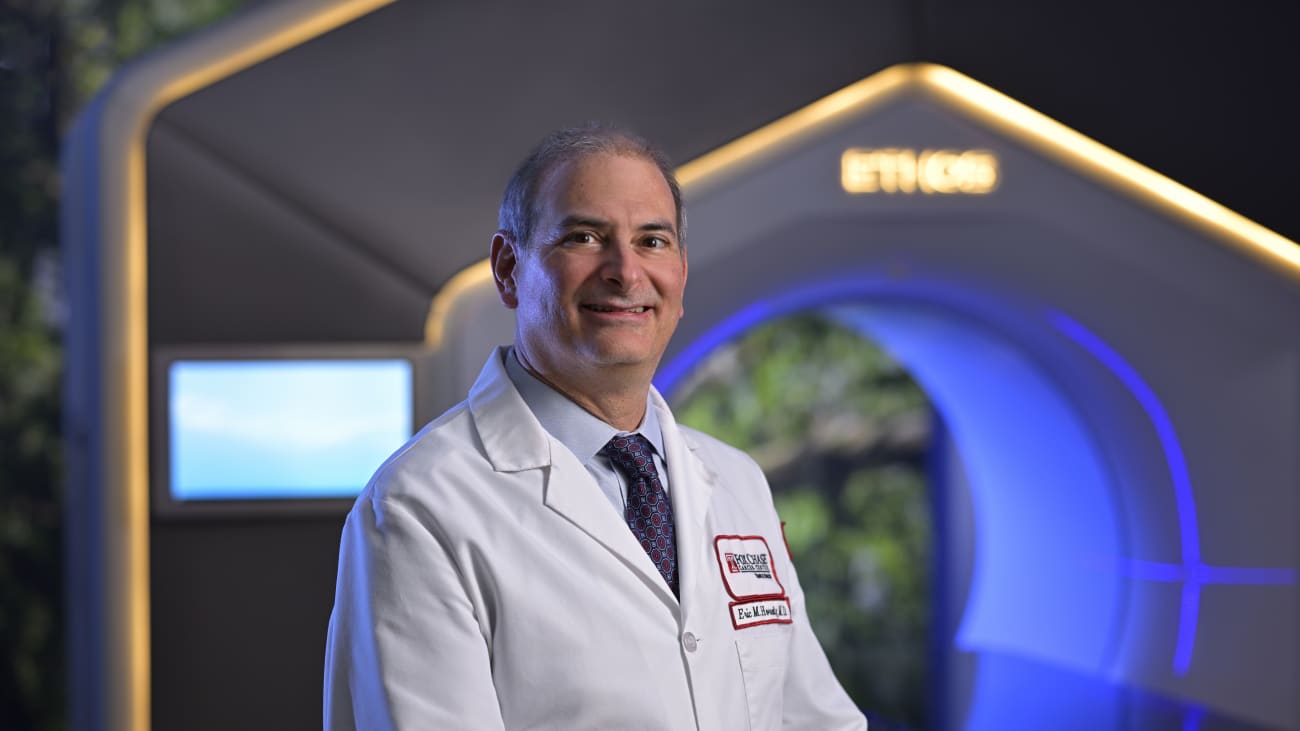The information presented in Oncology News Connection (ONC) eNewsletter is provided for physicians and other healthcare providers only and should not be shared with any current or future patients. If you are not a healthcare provider, we welcome you to sign up for Thrive eNewsletter to receive the latest information and blog highlights from Fox Chase Cancer Center.

Eric Horwitz, MD, FABS, FASTRO, chair of the Department of Radiation Oncology at Fox Chase and the Lewis Katz School of Medicine at Temple University
“Adaptive radiation therapy will revolutionize radiation therapy,” says Eric Horwitz, MD, FABS, FASTRO, chair of the Department of Radiation Oncology at Fox Chase and the Lewis Katz School of Medicine at Temple University. Dr. Horwitz refers to the new radiation treatment that is now offered at Fox Chase Cancer Center using the EthosTM therapy system—a state-of-the-art linear accelerator (linac) that includes CBCT imaging technology and artificial intelligence-based software to power the adaptive treatment process. Adaptive radiation therapy allows clinicians to make daily adjustments in a patient’s treatment in real time based on the cancer’s response to the radiation, position of the tumor, and the location of the adjacent normal organs.
“With existing radiation therapy techniques such as IMRT or SBRT, we create a treatment plan at the start of therapy and use the same plan throughout. When needed, we reposition the patient on the table to ensure the radiation hits the target (the cancer),” Dr. Horwitz says.
Adaptive therapy takes us a giant step further.
With the Ethos system, everything changes: Clinicians get a “living picture” of the tumor and the tissues and organs surrounding it to learn whether the tumor is shrinking or has moved, even by millimeters. Has the patient lost weight? Have organs shifted ever so slightly? Based on what is present each day, the plan is adjusted (adapted) to reflect the reality of the moment. This daily review translates into a real-time treatment plan that is designed to ensure that the optimal radiation dose hits the tumor while minimizing damage to the healthy tissue and organs.
Over the entire course of treatment, these changes and adjustments can add up. “It is, by far, the most sophisticated way of delivering a large dose of radiation to the cancer and protecting the normal cells nearby,” Dr. Horwitz said.
Who’s a candidate?
“Essentially, anyone who is a candidate for stereotactic body radiation therapy and some IMRT could opt for adaptive radiation therapy,” says Dr. Horwitz. “Adaptive radiation therapy can be used as standard treatment, while some patients can also take advantage of this technology by participating in and receiving treatment on a clinical trial.”
CBCT (cone-beam computed tomography)-based adaptive radiation therapy is Food and Drug Administration (FDA)-cleared to treat many different cancers, from the head and neck through the pelvis. Fox Chase is the only regional cancer center to explore its possibilities using clinical trials to develop even more sophisticated radiation treatments. The first study that will be offered by investigators at Fox Chase will enroll men with early and intermediate-risk prostate cancer. The multi-institutional study is titled “Daily Adaptive Stereotactic Body Radiation Therapy for Prostate Cancer with Urethral Sparing: A Prospective Trial Using an Individualized Approach to Reduce Urinary Toxicity (ARTIA-Prostate).” This trial will deliver adaptive SBRT to the prostate with a reduced dose to the urethra with the goal of lowering urinary side effects.
In addition to its prostate cancer research, Fox Chase plans investigator-initiated studies in bladder, pancreas, lung, and head and neck cancers using this technology.
“Part of our mission as a national cancer center is to utilize sophisticated technology to get better control of someone’s cancer while at the same time having the fewest side effects possible. Introducing adaptive radiation therapy at Fox Chase allows us to bring unique state-of-the-art cancer treatment to many patients, one not offered anywhere else in the Philadelphia area,” Dr. Horwitz concludes.